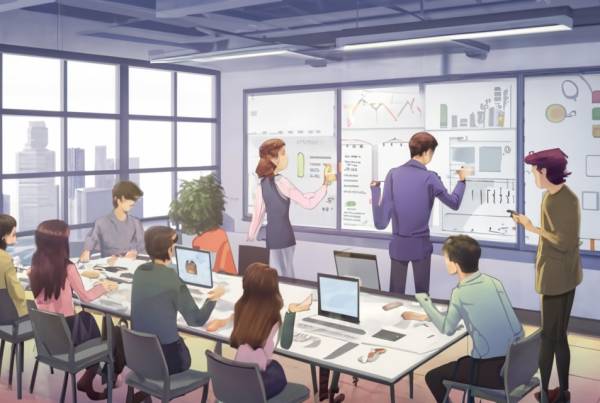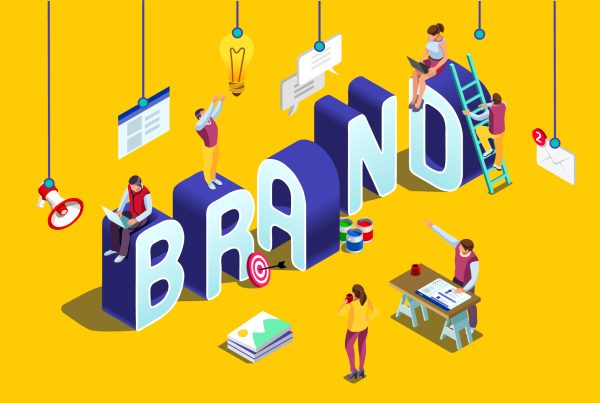As a designer who has worked in both agency and product environments, I’ve had the unique opportunity to experience firsthand the distinct differences between the two. Almost 2 years ago, I made the switch from an agency to a product role, and while I was excited about the new challenge, I wasn’t entirely sure what to expect. The transition came with its own set of surprises and learning curves, and now, with some solid experience under my belt, I can reflect on what sets these two worlds apart.
This article is for anyone out there who may be considering a similar move or is simply curious about how these environments differ. Whether you’re an agency designer contemplating a switch to product, a product designer looking for more excitement and variety, or just looking to understand the nuances between the two, I hope this breakdown helps you navigate your career path with a bit more clarity.
While the work, on paper, might sound very similar for agency designers and in-house product designers, there are major differences in how these roles function day to day, and there are absolutely pros and cons for both. Some of these differences include scope, client/stakeholder communication, environment, team culture, career development and even the amount of creative freedom you get. These are general and not necessarily applicable to every business’ ways of working.
I’ll break the differences down in a second, but first I want to debunk a myth. I’ve heard a lot of people say that you can’t do UX or Product Design at an agency due to the nature of agency work. This is simply not true. Not only can agencies undertake product work, they can thrive with it! And I say this as someone who led a shift at my previous agency from “churn and burn” to iterative and critical design. So if you’re thinking that you have to go in-house to be able to do UX work, think again!
That being said, we’re here to discuss the differences, not just the similarities, so let’s break it down in simple dot point form:
1. Scope of Work
Agency Designers:
- Diverse Projects: Designers handle a variety of projects across different industries, offering constant creative stimulation.
- Shorter Timelines: Work is fast-paced, with tight deadlines that require efficiency and quick thinking.
Product Designers:
- Focused on a Single Product/Suite: Designers concentrate on a single product or suite, allowing for deep exploration and refinement over time.
- Long-Term Vision: There’s a focus on continuous improvement, with projects evolving based on user feedback and long-term goals.
The Good:
Agency:
- Creative diversity
- Rapid skill development
- Varied portfolio
Product:
- Deep expertise
- Long-term impact – Opportunity to iterate and improve designs
The Bad:
Agency:
- High pressure – Potential burnout
- Less depth in individual projects
Product:
- Less variety
- Slower pace of change – Potential for monotony
Comparison:
Agency designers work on a variety of projects across different industries, which keeps the work dynamic and fast-paced. This environment sharpens adaptability and offers a broad portfolio. Product designers, on the other hand, focus deeply on a single product, allowing for iterative refinement and long-term impact. The choice here depends on whether you prefer the excitement of diverse projects or the satisfaction of honing one product over time.
2. Client/Stakeholder Interaction
Agency Designers:
- External Clients: You work with various clients, each with their own expectations and needs.
- Presentations & Pitches: A significant part of the job involves presenting and pitching ideas to win over clients.
Product Designers:
- Internal Stakeholders: You collaborate with internal teams, including product managers and engineers, focused on shared goals.
- User-Centered Focus: Decisions are driven by user needs and data rather than client preferences.
The Good:
Agency:
- Networking opportunities
- Diverse client interactions
- Constant new challenges
Product:
- Consistent collaboration
- User-focused design
- Clear alignment with business goals
The Bad:
Agency:
- Frequent changes in direction
- The need to align with external client demands
Product:
- Less variety in client interaction
- More focus on internal politics
Comparison:
Agency designers engage with multiple clients, requiring strong presentation skills and the ability to manage varied expectations. This can be both challenging and rewarding but often leads to frequent changes in direction. Product designers collaborate with internal stakeholders, focusing on user-centered design driven by data. This results in consistent, aligned work, though it may lack the external variety of agency roles.
3. Creative Freedom
Agency Designers:
- Varied Creative Constraints: Depending on the client, creative freedom can range from highly restrictive to wide open.
- Trend-Driven: Agencies often push for the latest trends to appeal to a broad client base.
Product Designers:
- Consistency Over Creativity: Emphasis is on maintaining design consistency, often within established design systems.
- Data-Driven Design: Creativity is balanced with data-driven decisions to ensure user needs and business goals are met.
The Good:
Agency:
- Opportunities to explore new trends
- Potential for high creative expression
Product:
- Opportunity for consistent, iterative improvement
- Strong focus on data-driven results
The Bad:
Agency:
- Creative freedom can be limited by client demands
- Frequent shifts in direction
Product:
- Less room for creative exploration
- Potential constraints due to design systems
Comparison:
Agency roles often offer more creative freedom, with opportunities to explore new trends, though this is balanced by client constraints. Product designers work within established design systems, focusing on consistency and data-driven decisions. While less creatively liberating, this environment allows for the deep refinement of user experiences.
4. Career Development
Agency Designers:
- Rapid Skill Development: The variety and pace at agencies can accelerate your skillset across different industries and projects.
- Networking Opportunities: Working with multiple clients expands your professional network.
Product Designers:
- Subject Matter Expertise: You develop deep knowledge of a specific product and its market, becoming an expert in that area.
- Cross-Functional Growth: Close collaboration with other departments broadens your understanding of the product lifecycle.
The Good:
Agency:
- Fast skill development
- Broad industry experience
- Expanded network.
Product:
- Expertise in a specific domain
- Opportunities for long-term growth
- Strong cross-functional collaboration
The Bad:
Agency:
- Less depth in any one area
- High-pressure environment – Risk of burnout
Product:
- Limited variety in work – Risk of burnout
- Potential for slower career progression in certain areas
Comparison:
Agency work accelerates skill development across diverse industries, offering broad experience and networking opportunities. It’s ideal for those seeking rapid growth and variety. Product design, by contrast, allows for deep expertise in a specific domain, with opportunities for cross-functional collaboration and long-term career growth. Your choice depends on whether you value broad, fast-paced learning or deep, focused expertise.
5. Work Environment and Culture
Agency Designers:
- Fast-Paced and Dynamic: Agencies are lively, with frequent deadlines and a high-energy atmosphere.
- Team Collaboration: Strong emphasis on teamwork and collective creativity.
Product Designers:
- Structured and Stable: Product environments are typically more structured, with steady progress towards long-term goals.
- Cross-Departmental Collaboration: Regular interaction with other departments like engineering and marketing.
The Good:
Agency:
- Dynamic work environment
- Team-driven creativity
- Constant excitement
Product:
- Stable work environment
- Clear long-term goals
- Cross-functional teamwork
The Bad:
Agency:
- Less stability
- High pressure – Potential for burnout
Product:
- Can be slower-paced
- Less dynamic – More bureaucratic
Comparison:
Agency environments are dynamic and fast-paced, fostering creativity and teamwork but can be stressful. Product environments offer more stability and long-term focus, with structured, cross-departmental collaboration. This setting suits those who prefer a steady, predictable work culture over the high-energy atmosphere of agencies.
Picking the right one for you
Choosing between an agency and a product environment depends on your career goals, preferred work style, and the kind of challenges that excite you. If you thrive in fast-paced, varied environments and enjoy working on different projects, an agency might be the right fit. On the other hand, if you prefer deep, long-term involvement with a single product and enjoy working closely with cross-functional teams, a product design role could be more fulfilling.
Both paths offer valuable experiences and opportunities for growth, and understanding the differences can help you make an informed decision about where you want to take your design career.



